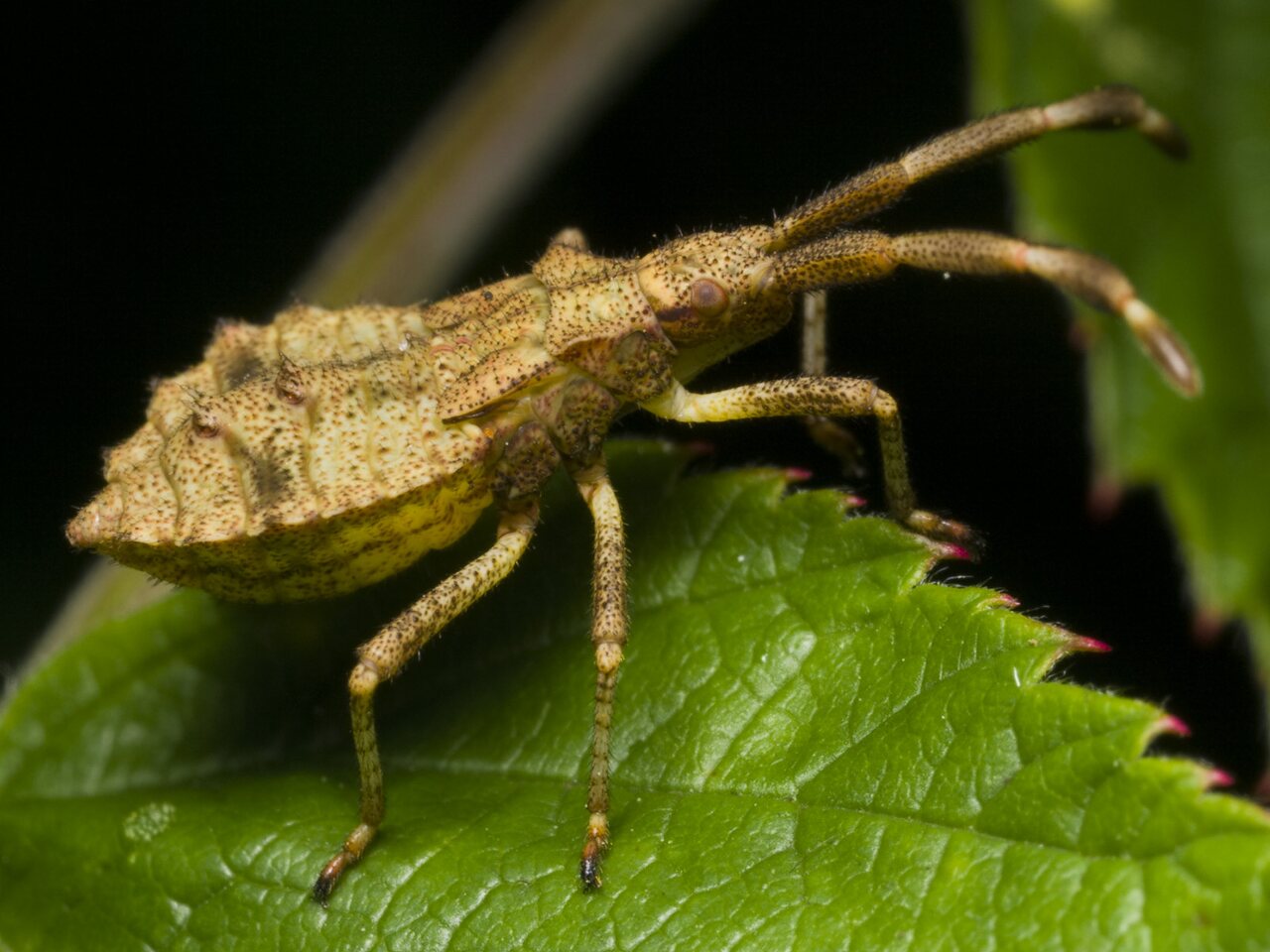
Coreus marginatus nymph · arkliarūgštinė kampuotblakė, nimfa
late instar nymph
- dock bug
- Lederwanze, Große Randwanze, Saumwanze
- arkliarūgštinė kampuotblakė
- skābeņu krāšņblakts, skābeņu-vīgriežu ornamentblakts
- wtyk straszyk, straszyk szczawiowiec
- en.wikipedia.org/wiki/Coreus_marginatus
- britishbugs.org.uk/heteroptera/Coreidae/coreus_marginatus.html
It occurs throughout Europe, Asia and northern Africa. It is often found in dense vegetation, such as hedgerows and wasteland. Adult length 13-15 mm. The two small projections between the adult antennae are diagnostic. There is one generation per year, adults mating and laying eggs in spring/early summer. New adults may be found from August.
The dock bug is herbivorous and feeds on a wide variety of plants from different families. While the common name in English refers to its preferred diet of docks and sorrels and other plants in the family Polygonaceae, they also readily feed on certain species of Asteraceae and Rosaceae. Adults are known to feed on raspberry, gooseberry and sometimes blackcurrant.
‥
0 comments
Add a comment
Comments